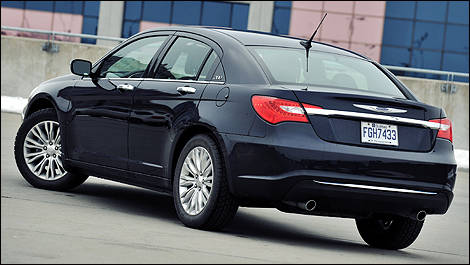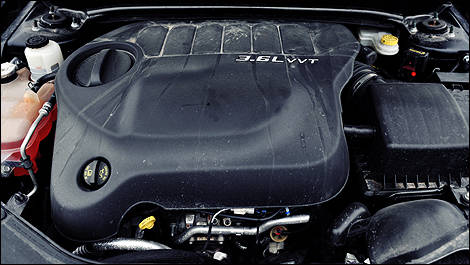The strategy isn’t new. Breathing new life into a truly uncompetitive product, without starting from scratch, has been done before. Toss in a name change, and you can almost get away with convincing the average car shopper that your product is brand-new.
In recent years, Ford did it with the Five Hundred and Freestyle, which became the Taurus and the Taurus X. Obviously, the automotive journalists dismiss this practice as a twisted way to make new with old. But what if the resulting product is way better than the previous?
Is the 200 way better than the Sebring? Yes and no. It depends how you view it. If Chrysler would have tried to smother the car’s weaknesses with more chrome, softer tires and a new grille, the answer would definitely have been no. But in the 200, they addressed the Sebring’s three major shortcomings with noticeable improvement, which convinces me to say yes.
Can the 200 be considered as a gotta-have mid-size sedan? No, but one can still appreciate the effort Chrysler put into this car.
Fixed major shortcoming #1: powertrains (well, sort of)
The Sebring’s 2.4-litre inline-4 is back in the base 200 LX and 200 Touring, and still produces 173 horsepower. While its raucous soundtrack might be tolerable in a Jeep Patriot, it isn’t in a luxury car. Nonetheless, it’s available with a lacklustre 4-speed automatic or an optional 6-speed auto with manual mode.
We’d instinctively recommend spending the extra $695 for the 6-speed, but it actually worsens the car’s city fuel economy rating (9.9 and 6.7 L/100 km city-highway for the 4-speed, 10.5 and 6.4 L/100 km for the 6-speed). So if your daily commute involves a lot of urban driving, stick with the 4-speed. This isn’t right.
But whatever. The good news is that the new 3.6-litre Pentastar V6, optional in the mid-grade Touring and standard in the Limited, replaces both the hoary 3.5-litre ‘high-output’ (sic) and wheezy 2.7-litre units. It hardly sacrifices fuel consumption over the 4-cylinder, at 11.0 and 6.8 L/100 km city/highway. In fact, the engine spins at just 1,700 rpm at 100 km/h, and our calculated average over the course of the week is 9.8 L/100 km.
In recent years, Ford did it with the Five Hundred and Freestyle, which became the Taurus and the Taurus X. Obviously, the automotive journalists dismiss this practice as a twisted way to make new with old. But what if the resulting product is way better than the previous?
 |
| While creating the 200, Chrysler fixed three major shortcomings in the Sebring. (Photo: Matthieu Lambert/Auto123.com) |
Is the 200 way better than the Sebring? Yes and no. It depends how you view it. If Chrysler would have tried to smother the car’s weaknesses with more chrome, softer tires and a new grille, the answer would definitely have been no. But in the 200, they addressed the Sebring’s three major shortcomings with noticeable improvement, which convinces me to say yes.
Can the 200 be considered as a gotta-have mid-size sedan? No, but one can still appreciate the effort Chrysler put into this car.
Fixed major shortcoming #1: powertrains (well, sort of)
The Sebring’s 2.4-litre inline-4 is back in the base 200 LX and 200 Touring, and still produces 173 horsepower. While its raucous soundtrack might be tolerable in a Jeep Patriot, it isn’t in a luxury car. Nonetheless, it’s available with a lacklustre 4-speed automatic or an optional 6-speed auto with manual mode.
We’d instinctively recommend spending the extra $695 for the 6-speed, but it actually worsens the car’s city fuel economy rating (9.9 and 6.7 L/100 km city-highway for the 4-speed, 10.5 and 6.4 L/100 km for the 6-speed). So if your daily commute involves a lot of urban driving, stick with the 4-speed. This isn’t right.
But whatever. The good news is that the new 3.6-litre Pentastar V6, optional in the mid-grade Touring and standard in the Limited, replaces both the hoary 3.5-litre ‘high-output’ (sic) and wheezy 2.7-litre units. It hardly sacrifices fuel consumption over the 4-cylinder, at 11.0 and 6.8 L/100 km city/highway. In fact, the engine spins at just 1,700 rpm at 100 km/h, and our calculated average over the course of the week is 9.8 L/100 km.
 |
| The 3.6-litre V6 produces 283 horsepower, making the 200 the most powerful in its category. (Photo: Matthieu Lambert/Auto123.com) |


